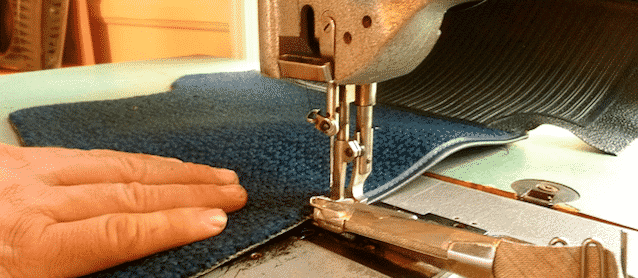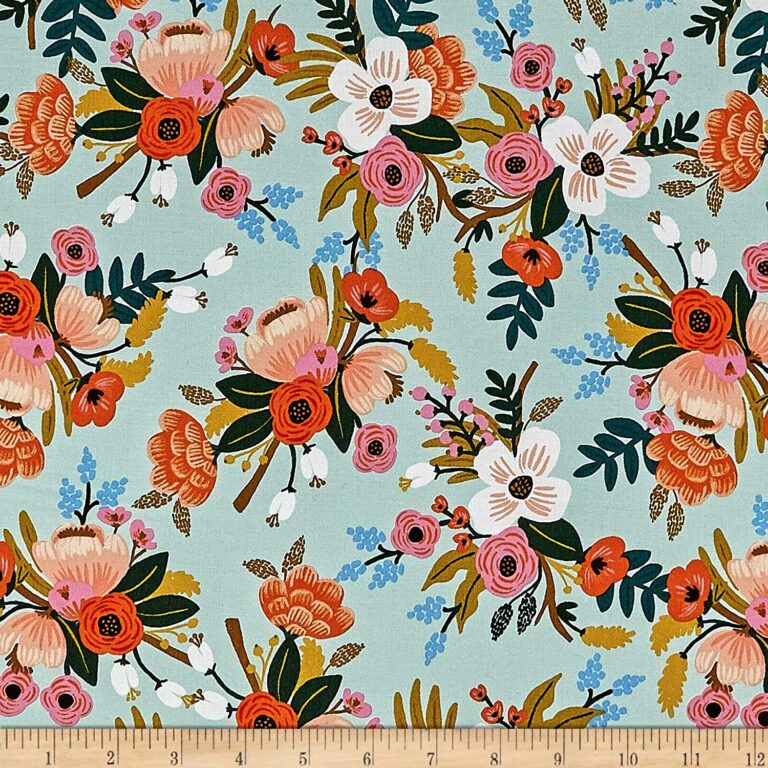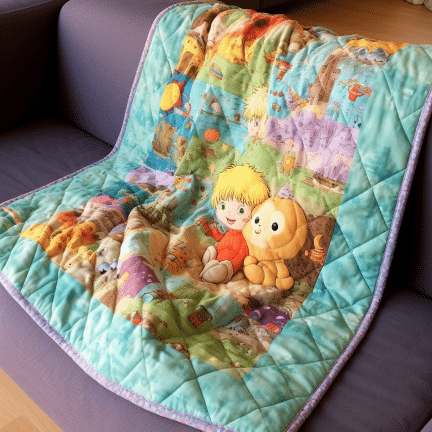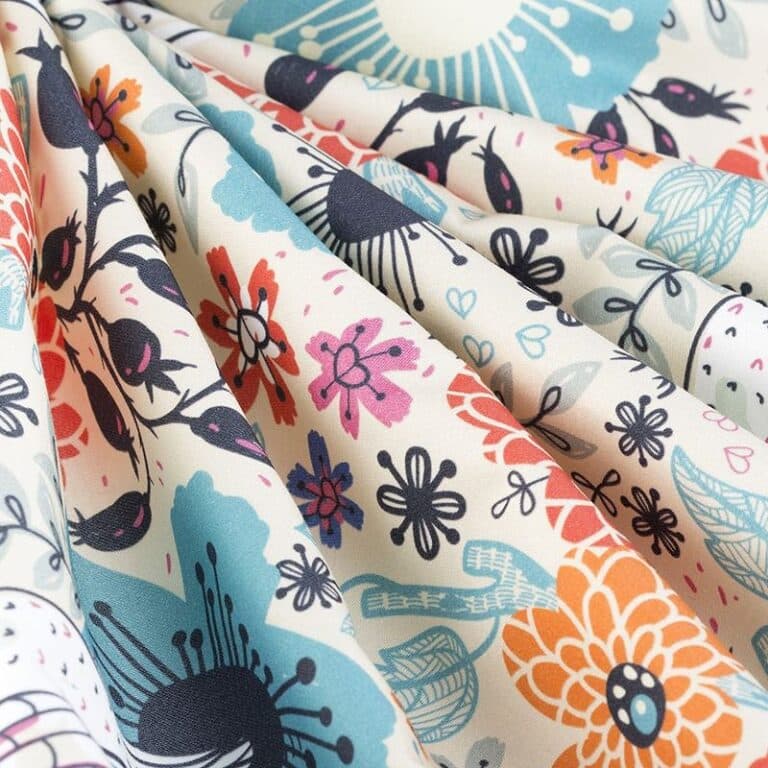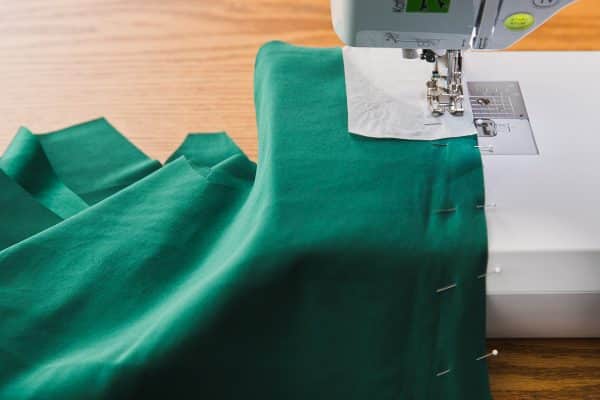Burlap Fabric: History, Properties, Uses, Care, Where to Buy
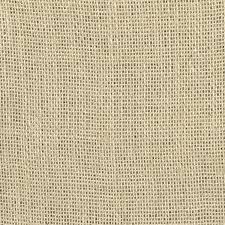
Burlap is also one of those fabrics. It is made of jute plant or sisal fibres. This natural fabric with loosely woven fibre follows the sewing requirements of other loosely woven fabrics.
In the present, people seldom make dresses with burlap fabric; rather, it is used for other purposes. However, it has been widely used in the past as soldiers’ clothing in the German army. Notably, German soldiers from specific Hesse region had a uniform made of jute fibre. In fact, the name Hessian came from the same origin.
Table of Contents
History of Burlap Fabric
The ancient Indians discovered the benefits of the jute plant plus its fibres. They made paper and rope with it. It was not famous until 1793 when some English merchants exported 100 tons of jute plant, which increased its popularity day by day.
This resulted in the opening of a first-ever jute mill in 1855 near Calcutta, India. Subsequently, in the span of just a few years, the industry expanded to Dundee, Scotland.
Experts in Dundee discovered the possibility of tough yarn production with jute plant and became the centre of large jute fabric and yarn spinning. By the end of the 19th century, Jute spread in countries like America, Russia, Italy and Germany. Jute was an Indian Production, but the British introduced it to the world.
Started just from India, today Jute plant is grown in various parts of the world including India, China, Bangladesh, Brazil, Myanmar and Thailand due to its growing popularity.
Properties of Burlap Fabric
Coarse Material:
Since burlap is made of Jute plant or sisal fibres, it has a coarse material as compare to other fabrics like cotton or polyester.
Vulnerable to Shedding:
The Jute plant used in it makes it vulnerable to shedding small fibres.
Natural Blemishes:
Because of the plant used in its production, it can naturally occur some blemishes.
Out of Shape:
The burlap fabric can easily stretch out of shape.
One-Way Pattern:
This fabric has a Frequent one-way pattern.
Bulky:
Most of the Burlap fabric comes in a thicker form which makes it bulky.
Slubs:
Due to the nature of this fabric, it often has slubs. Slubs can be troublesome while sewing; it can cause deflection in the needle and can break it and crook stitching.
Uses of Burlap Fabric
Three major uses of Burlap fabric are as follow:
Packaging:
Burlap can be used in agricultural packaging. Jute fibres can make a durable and extremely strong sack. Its durability and strong quality make it perfect for carrying grains, cement and coffee beans etc.
Sandbags:
Sandbags made with burlap filled with sand can be useful for making embankments in order to divert floodwaters.
Art:
Artists use burlap as a substitute for linen and cotton as a working surface or stretched painting. It is also used as a mask and for beheading mask in horror fictions.
Caring for Burlap Fabric
Burlap is a sensitive fabric. It can be unraveled if washed and used roughly. Therefore, we recommend you to hand wash it.
Washing Instructions:
The Burlap fabric should be washed in cold water. It should be noted that hot/warm water can shrink it. For getting a delicate textile, you can use liquid detergent (gentle, with no excessive chemicals).
Soak it for five minutes. With the use of hands, stir the fabric slowly for making dirt disappear. Remember, water should be cold and running while rinsing it and twisting, or squeezing it can damage the fabric. If you follow these basic instructions, you will end up having a long-lasting Burlap fabric.
Where to buy Burlap Fabric
We recommend buying Burlap fabric at Fabric.com.
There are tons of different types of fabrics that you can use, but one type of fabric that’s an absolute must is burlap. It’s sturdy, durable, easy to work with, and can be used to make a variety of unique home décor creations, like table runners and drapery. You can also use it to create sturdy bags and even one-of-a-kind hair bows! Yes, there are tons of things that you can make with burlap; the only thing that will limit you is your imagination.
But when it comes to selecting burlap, like any other fabric, not all burlap is the same. If you want your projects to come to completion without a hitch, you’re going to want to choose the best quality burlap you can find. However, there are so many different types of burlap on the market that trying to narrow down the choices can seem like a pretty daunting experience. How do you know which options are the best? We’ve taken the liberty of reviewing dozens of different burlap fabrics; we’ve tested them out for quality and durability, and we’ve worked with each option ourselves. Based our findings, we’ve managed to narrow down the choices to what we consider to be the top five options.
Best Burlap Fabrics
| Image | Burlap Fabric | Rating |
|---|---|---|
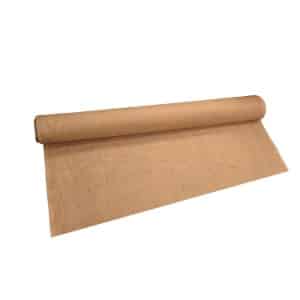
| 1. LA Linen 60-Inch Wide Natural Burlap | 99% |
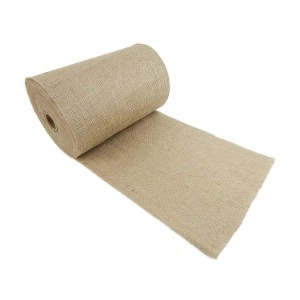
| 2. Burlap and Beyond 12in Natural Burlap Roll | 96% |
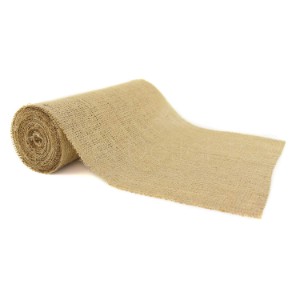
| 3. FiveStar Fabulous 12in Natural Burlap Roll | 93% |
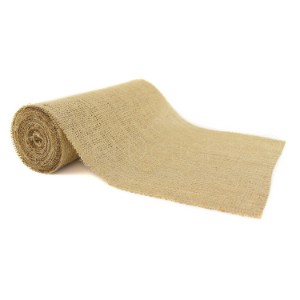
| 4. CleverDelights 12in Natural Burlap Roll | 89% |
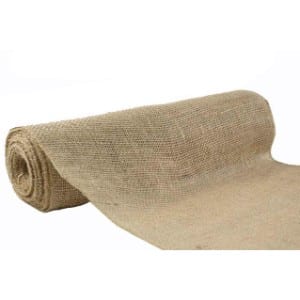
| 5. MYBECCA Burlap Natural 60-Inch Wide | 85% |
1. LA Linen 60 Inch Wide Natural Burlap

The 60 inch width of this burlap makes it ideal for a variety of projects. Since it is completely natural, it’s biodegradable, which makes it an ideal choice for gardening projects, such as plantings and the like. Or, you can also use it to create decorative projects; for example, you could use it to create a sturdy shopping bag, embellished with some sewing sequin trim. The material is extremely durable and it’s easier to maintain than a lot of other burlap fabrics we’ve come across; but, do note that it should not be soaked in water or put in the washing machine, as doing so will likely ruin the fabric. Instead, spot cleaning or dry cleaning is recommended. Whatever you’re intentions are for this burlap, you can rest assured that you will be getting a high-quality material when you choose this option from LA Linen. There are several different lengths available, ranging from 1 yard to 100 yards, so you’ll be able to choose the perfect amount for your needs.
Based on the reviews that we read, most customers are very happy with LA Linen’s burlap fabric. They say that it’s easy to work with and durable, and love that it’s natural. However, some customers complained about the odor and dust; but, these features are normal for any natural burlap. If you’re concerned about the dust and odor, simply air it out before using.
What We Like About It
- Made of 100 percent natural jute fiber
- Minimal processing
- Biodegradable
- Extremely durable
- Easy to work with and care for
- The 60 inch width is perfect for a variety of projects
- Available in a large variety of lengths
Reasons to Complain
- It might have a bit of an odor and some dust; however, this is completely normal for natural burlap
Final Verdict: Overall, we were very impressed with LA Linen’s 60 inch Wide Natural Burlap. We love that it’s all natural and made with minimal processing. We also love the 60 inch width, how durable it is, and that its biodegradable.
Check Today's Price on Amazon
2. Burlap and Beyond 12 Inch Natural Burlap Roll

This burlap is a 50 yard roll, or 150 feet, so you’ll certainly have plenty of material for whatever projects you are planning on using it for. Since it’s made of 10 oz burlap, the spacing between the threads is smaller than other burlap fabrics we’ve seen, which offers a more uniform look. Do note, however, that there’s no mention of whether or not this fabric is all natural or biodegradable. Also, the edges are unfinished, which we think adds to its rustic charm; but, if you’re looking for a more finished look, you might want to consider another option. Based on the reviews that we read, the majority of people who have used this burlap fabric are very pleased with it. But, some users did complain about the fact that it sheds and is a little dusty; however, these features are common with burlap and aren’t just limited to this material.
What We Like About It
- The smaller spacing between the threads offers a more uniform look
- Comes with 50 yards of fabric
- The 12 inch width is perfect for various types of projects
- Has a beautiful, rustic look
- Easy to work with
Reasons to Complain
- The edges are unfinished, which some might find problematic
- It does shed and have a slight odor; but, these are natural features of any burlap
Final Verdict: Honestly, we were quite pleased with the Burlap and Beyond 12 Inch Natural Burlap Roll. We loved the uniformity of the material, how easy it is to work with, and that it can be used for so many different projects.
Check Today's Price on Amazon
3. Five Star Fabulous 12 Inch Natural Burlap Roll

Made of premium burlap, this material is very durable and easy to work with. We found that cutting through it with a pair of cutting scissors was a breeze, and we also had no trouble using a basic hand sewing needle to affix some decorative accents to the fabric, like sewing lace and fabric ribbons. According to the reviews that we read through, it seems that the majority of people who have used this burlap are just as pleased as we are with it. But, do note that it does emit a slight smell, which is pretty common for any burlap material. If you let it air out for a day or two before using, you shouldn’t have any problems.
What We Like About It
- Comes in a 10 yard roll
- 12 inch width
- Sturdy and durable
- Easy to work with
- Backed by a satisfaction guarantee
- Affordable price
Reasons to Complain
- Some users said that they weren’t pleased with the odor; but again, this is a standard feature of burlap
Final Verdict: If you’re looking for a smaller amount of burlap and don’t want to pay a fortune, then Five Star Fabulous 12 Inch Natural Burlap Roll is a great option for you. It’s durable, easy to use, lightweight, and since it’s only 10 yards long, you won’t have tons of extra.
Check Today's Price on Amazon
4. Clever Delights 12 Inch Natural Burlap Roll

This burlap is very strong, so it can be used for a variety of projects without having to worry that it will break down. It can be used for table runners, banners, decorative wall hangings, and so much more! The threads between the fibers are spaced widely, which lends even more rustic charm to the fabric; however, if you’re looking for a more cohesive look, you might want to consider a fabric that has tighter threading. According to the majority of customer reviews, this material is outstanding; but, some people did say that it emitted an odor. We can’t stress this enough: an odor is normal for new burlap material. It does fade after a few days.
What We Like About It
- 12 inch width
- 10 yards long
- All natural, so it’s biodegradable and eco-friendly
- Can be used for a wide range of projects
- Most customers are very happy with the material
Reasons to Complain
- It does have a scent, but you will be hard-pressed to find new burlap that doesn’t have an odor
Final Verdict: Clever Delights 12 Inch Natural Burlap Roll is a fantastic choice for smaller projects that don’t require a tremendous amount of burlap. This fabric is very durable, easy to manipulate, and can be used for virtually anything you can think of.
Check Today's Price on Amazon
5. My Becca Burlap Natural 60 Inch Wide

Since this burlap is 100 percent biodegradable, it can be safely used in agricultural capacities. For example, you could line your flower beds with it to prevent weeds from growing through without having to worry about the fabric damaging the environment. The strength of this burlap is outstanding, and it can easily be cut without causing a tremendous amount of fraying; something that can’t be said for a lot of other burlap fabrics we’ve worked with. Based on customer reviews, most of the people who have purchased this burlap are very happy with it. But, there were some complaints about the odor, which seems to be a consistent complaint for all of the burlap materials listed in this review. Burlap does have an odor, and the scent coming from this fabric is no worse than any other fabric we’ve mentioned.
What We Like About It
- 60 inch width
- Available in a range of lengths
- Biodegradable, so it can safely be used in agriculture capacities
- Easy to cut and work with
- Most customers are very happy with the product
Reasons to Complain
- Again, like all of the other burlap materials mentioned in this review, there were a few complaints about the smell; however, airing the fabric out does help to diminish the scent.
Final Verdict: My Becca Burlap Natural 60 Inch Wide burlap is a great choice for so many different projects. It’s strong and sturdy, and it is available in a variety of lengths. It’s also very easy to work with.
Check Today's Price on Amazon
The Best Burlap Fabric: A Buyer’s Guide
If you’re looking to add a rustic element to your home décor, crafts, or even your accessories and apparel, burlap fabric is definitely something that you are going to want to have in on-hand. The natural appeal of this fabric has made burlap one of the most beloved options for today’s rustic style, which is currently all the rage. Burlap has a timeless appeal and it can easily be used with a variety of styles.
Whether you’re an experienced seamstress who makes advanced, professional-quality projects or you are a novice who is just starting to get experience behind an electronic sewing machine, there are some sewing essentials that you are definitely going to want to have on-hand in your sewing room. In addition to the obvious items, like a sewing machine, a sewing help book (or several), a sewing desk, and a sewing chair, you’re also going to want to have a nice collection of sewing fabric available.
What is Burlap?
Burlap is a woven fabric that is traditionally made from the fibers of jute plants; however, sometimes, it is also made from hemp or flax. This material is known for its earthy-appeal. The natural color is an earth-like beige; however, there are dyed options available, so if you’re looking for something that has a different color, you can certainly find it.
Burlap is extremely durable, which is another reason why it is so appealing. The fibers are made from the stems of some of the hardiest plants, so it’s certainly strong and can withstand a lot of wear and tear.
The Benefits of Burlap
As mentioned, one of the biggest benefits of burlap is that it is so durable. Unlike a lot of other fabrics, it can withstand a great amount of stress without breaking, pulling, of fraying.
In addition to its durability, burlap is also biodegradable. That’s because the fibers are made from natural plants. This is the reason why burlap is often used in agricultural applications; however, eco-conscious crafters are also using the fabric to create a variety of projects. Lastly, it’s relatively inexpensive compared to a lot of other materials, such as satin and silk; albeit, burlap has a completely different look and feel than these two materials.
Burlap Uses
You can use burlap in variety of ways. Gardeners and farmers often use it as a protective covering for their flowers and crops, and it is also an excellent weed barrier. Since it is biodegradable, it won’t impact the environment in these applications. However, this material can also be used in so many other ways. Some examples include decorative wall hangings, table runners, placemats, tablecloths, sachets, banners, party favors, shopping bags, and various other decorations.
Sources:


